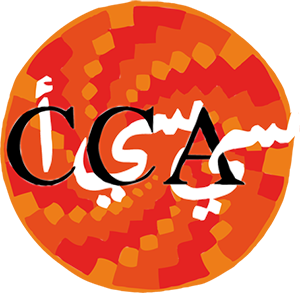This week we’re reporting on the final session of the Mosaic Conservation Course General Meeting, which featured four speakers from Jordan who participated in the latest MCC course. Read our previous reports on Session 1, Session 2 and Session 3.
Nemer Alzouby and Mashour Altifiehat discussed their work at the Madaba Institute for Mosaic Art and Restoration, with a particular focus on the development and use of alternative backing materials to replace Aerolam. A support developed at the Institute consists in a sandwich of thin fiberglass panels, with a plastic material in the middle and aluminum over the sides. All the materials are low cost and easily available locally.
Mashour described the training activities of the institute, where students are taught to produce new mosaics using traditional techniques, and many work as mosaic makers after graduating. The Institute is very active in public outreach, receiving frequent visits from school groups and teaching in local schools.
Firas Tibayshat works for the Department of Antiquities of Jordan. He presented a review of the deterioration mechanisms affecting mosaics in the churches of Bishop Isaiah and Saints Cosmas and Damianus in Jerash, Jordan. A major issue is that access to these important buildings is not regulated. Old restorations with cement are widespread on site as well as on the many mosaics present in the deposits.
Mohammed Sh’Yyab is a mosaic restorer for the Department of Antiquities of Jordan. He discussed the conservation program carried out during the past two years on the mosaics of the 6th century Byzantine church of Saint Mary. The mosaics were in critical conditions due to the fact that the site had been abandoned for many years and was exposed to the harsh mountain climate. The site was used as a military base during the Second World War, and was bombed in later years. This resulted in the loss of the majority of the mosaic surface. Treatment included removal of old fills, consolidation and reburial with sand and plastic sheets.
In the final discussion, CCA Director Roberto Nardi highlighted how after many years of training efforts, several key points can be considered widely acquired, including documentation, the use of appropriate materials such as lime-based mortars, the importance of training colleagues and of raising public awareness.
Jeanne Marie Teutonico, GCI Associate Director, noted how the presentations had shown that trainees were applying what they had learnt during the courses but also adapting approaches to the different contexts in which they operate, which is necessary to ensure the sustainability of their practices. In her concluding remarks, she encouraged the students to consider learning as a lifelong process and to always be ready to learn from each other.
